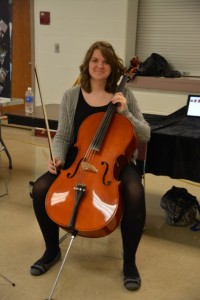 A CES Big Idea, by George Wood
A CES Big Idea, by George Wood
Ideas and strategies for improving schools often fall victim to the “Yes, but…” phenomenon. It goes like this: after finishing a talk about the importance of student engagement through making time for advisory, the first comment from the floor is dismissive. “Well, that sounds good, but it won’t work here because [name a local condition].” My experience with CES has taught me that of all the paths for school change, commitment to the Common Principles is the one that stands up to the “Yes, buts.”
When I became principal at Federal Hocking High School more than two decades ago, the staff, students, and parents were looking for ways to restructure our school. Federal Hocking High School is a public school serving all the children within the 190 square miles that make up our district boundaries in rural, Southeastern Ohio. We are not a choice, or a magnet, or anything other than a local district school. Our student body is over 86 percent economically disadvantaged with ethnic and racial backgrounds that reflect greater Ohio. Everyday, we open our doors to all children in our area, regardless of ethnicity, handicapping condition, gender, race, or creed. They are all welcome and for the most part without alternate educational options, they all have to attend—and this last fact leads to some interesting conflicts and tensions.
Federal Hocking High School was a failing school. Signs of failure were everywhere. Fewer that 70 percent of students were graduating and less than 25 percent went on to college, as far as anyone knew because no records were being kept. The school was clearly ‘’reckless,” with physical damage and graffiti widespread, teachers exhausted by the demands of class loads in excess of 150 children a day, and students whose schedules were filled with study halls and physical education classes. No one wanted it that way, but it seemed that this was all that was possible as staff made their own “Horace’s Compromises,” focusing on the students that were succeeding and letting other classes slide if only children would (somewhat) behave.
Today, in this rural, poor corner of Appalachia, we are a transformed school, adhering to the Common Principles. Our Senior Project requirement, our Graduation Portfolio, our internship and advisory programs, interdisciplinary teaching and block schedule: all have been motivated by the ideas of CES.
How did this happen?
In 1993, the school community met to discuss what could be different. We looked at what was going well, and why we did not do more such work. We looked at what was not going so well, and why we persisted with those practices. Then we tried to figure out where to start. Time and size were the beginning. Teachers and students had too little time to dig into good work. Teachers had too many class changes and students to build meaningful connections. The very next year, we changed our schedule to a block schedule of four courses a semester. Federal Hocking High School continues to be the only school within 100 miles that does this.
Though it was the right thing to do, not enough thought went into this change. Like much we’ve done then and since, it was based on the “ready, shoot, aim” principle. But once we had launched the block schedule, the new pace of the day lent itself to more questions. Why are we ability grouping students? What can we do with an advisory system? Should students graduate just by credit or are there more ways to measure their readiness to move on? How can we give our students real world experiences? What should student work look like, and what about teacher work?
We did not know where to go with these questions until we heard about CES. One staff member brought the Common Principles to our attention and we decided to send a couple of staff members to a Fall Forum. They came back “on fire” and we knew we had found a home. Federal Hocking High School’s affiliation document framed and signed by Ted Sizer in 1995, is still in the front office.
Every step of the way, our school renewal efforts have been based on what CES represents. It has never been easy, and as a school that is not a choice we face the challenge of how to include all of our families in our plans. In one respect, our approach to rethinking our school is “forced” on all families. Children are mandated to attend our school. We have to remain sensitive to families that do not agree with our approach.
| Innovations at Federal Hocking High School inspired by the CES Common Principles |
|
No ability grouping. We felt the school’s goals should indeed apply to all students. An advisory system that takes up part of every school day because we’re committed to building a tone of decency and trust. Senior project requirement: a two-year independent effort that requires students to not only design a project and carry it out but also find a resource person outside the school was a way to demonstrate mastery. Graduation portfolio requirement: a collection of best work and writing about that work presented to a panel of faculty members. This has students stand and deliver real work for graduation. Student trustees are in charge of all student activities, and students have equal voice in staff hiring. This reinforces our commitment to democracy. Covering less in our courses in spite of the pressure to cover in even more for state and federally mandated tests is often challenged but we hold on to less-is-more. Reading and writing across the curriculum, seminars, and authentic assessments all put meaning to teacher as coach, student as worker. |

Senior Josiah Nutter, Federal Hocking High School class of 2015, with his senior project, a restored 1947 case tractor.
An example of how mindful we need to be to conflicting beliefs about education in our community came about in the 1990s, when a school board was elected with the express purpose of non-renewing my contract as principal. I was fired, and, in retrospect, I believe it was due to our moving faster than our community was ready for, specifically toward graduation by exhibition.
But even with these struggles, the wisdom of the CES approach emerged. In this case, having tasted the power of the education they were receiving, students organized media outreach, conducted a peaceful walk out and sit-in, ran seminars on local governance and prepped themselves to speak out in public forums and to the press. The staff realized what they might lose and took a strong stand for no program changes no matter who the principal was. Parents, sensing what their children could lose, spoke up and ultimately elected a different school board and secured a new contract for me.
In the end, what has really mattered is the evidence of our success. Today we have a graduation rate of over 97 percent (as good as the wealthiest districts in the state and far outstripping the state average) and graduates who make it into college (over 70 percent) or work within one year of graduation. Just as importantly, our alums are now the parents of our students, and, as one put it recently, “I have no doubts about the quality of the education my children get here.”
Visitors are often surprised to find our school in this setting. But it just demonstrates the power of the Common Principles to work anywhere. As part of Federal Hocking’s outreach, we helped design and launch Wildwood Upper School. Wildwood School is a private school in Los Angeles with a very different demographic than ours. Our work with Wildwood, when it added a secondary school, demonstrated the Common Principles’ adaptability. In both schools, young people and teachers experience the power of progressive, student-centered practices that engage students and empower teachers.
| Different Places, Shared Structures: Federal Hocking and Wildwood |
If you visited Wildwood Upper School in Los Angeles and Federal Hocking High School in Appalachian Ohio—different from each other in nearly every way—you would see common practices, based on the Common Principles, adapted for each setting:
|
When I visit schools in New York City, Atlanta, San Francisco, rural Maine and Pennsylvania, I feel at home. Because in all those schools the CES Common Principles drive their work, just as it does ours. No matter the governing system (charter, public, private, district choice), demographic (rich, poor, white, African American, Latino/Latina), or location (urban, suburban, rural) the Common Principles work—no if, ands, or buts about it. The Common Principles can foster uncommon schools in places common to children.
In looking back over the past two 20-plus years, our affiliation with CES has made a genuine difference. With no schools near us on a similar path, we have benefitted from the shared experiences of other CES schools to help us chart a course. Their commitment to the Common Principles, and the many ways they have interpreted them gave us license to try being uncommon, and that has made all the difference.
About the author
 George Wood is the Superintendent of the Federal Hocking Local Schools, a rural school district that serves the Stewart, Ohio region. George is the president of the Coalition of Essential Schools executive board and author of several books, including Time to Learn: How to Create High Schools That Serve All Students.
George Wood is the Superintendent of the Federal Hocking Local Schools, a rural school district that serves the Stewart, Ohio region. George is the president of the Coalition of Essential Schools executive board and author of several books, including Time to Learn: How to Create High Schools That Serve All Students.
George notes that the fish in the accompanying photo returned to its waters moments after this photo was taken.

